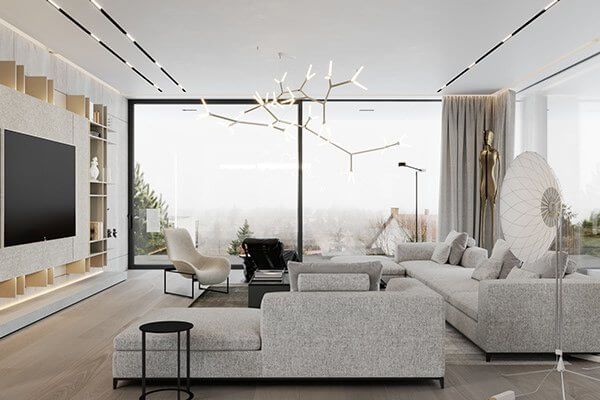Interior design is a field that is constantly evolving, and it is heavily influenced by cultural trends. Whether it is the use of specific colors, materials, or patterns, designers are always looking to incorporate the latest cultural trends into their work to create unique and inspiring spaces. In this article, we will explore how cultural trends are shaping contemporary interior design.
The Role of Culture in Interior Design

Culture plays a significant role in interior design. It shapes our taste, influences our preferences, and impacts the way we perceive design. Cultural trends are not limited to a particular region or ethnicity; they can be global or local. For instance, the use of sustainable and eco-friendly materials is a trend that has gained popularity globally in recent years.
Interior designers are constantly exploring new and exciting ways to incorporate cultural trends into their work. They are not limited to the use of furniture or decor items; they also consider the layout, lighting, and colors of a space.
The Impact of Cultural Trends on Contemporary Interior Design
Cultural trends have a significant impact on contemporary interior design. They dictate what is in style, what is out of style, and what is considered fashionable. For instance, minimalism is a trend that has been popular for some time now. It has influenced the design of homes, offices, and public spaces. Minimalist design features clean lines, simple colors, and a focus on functionality.
Another trend that has had a significant impact on contemporary interior design is the use of bold colors and patterns. This trend is inspired by African and South American cultures and is characterized by bright, bold colors and intricate patterns. It creates a unique and vibrant look that is both refreshing and exciting.
Cultural Trends and Sustainable Design
The use of sustainable design is a trend that has gained popularity in recent years. It is inspired by a desire to reduce our impact on the environment and create more environmentally-friendly spaces. Sustainable design incorporates the use of eco-friendly materials, such as bamboo, reclaimed wood, and recycled plastics. It also includes the use of energy-efficient lighting, water-saving fixtures, and other environmentally-friendly features.
Cultural trends are also influencing sustainable design. For instance, the use of natural materials, such as wood and stone, is a trend that is inspired by Scandinavian and Japanese cultures. These cultures have a deep respect for nature and incorporate natural materials into their design philosophy.
The Future of Cultural Trends in Interior Design
The future of cultural trends in interior design is exciting. As we continue to explore new and exciting ways to incorporate cultural trends into our designs, we will see new and innovative ideas emerge. We can expect to see more emphasis on sustainable design, the use of bold colors and patterns, and the incorporation of cultural trends from around the world.
Interior designers will continue to be inspired by cultural trends, and they will continue to push the boundaries of what is possible in design. Whether it is the use of eco-friendly materials or the incorporation of traditional patterns, cultural trends will continue to shape the way we design and experience interior spaces.
Cultural trends have a significant impact on contemporary interior design. They shape our taste, influence our preferences, and impact the way we perceive design. By incorporating cultural trends into our designs, we can create unique and inspiring spaces that reflect our values and beliefs.
The future of cultural trends in interior design is exciting, and we can expect to see new and innovative ideas emerge as designers continue to explore new ways to incorporate cultural trends into their work.

